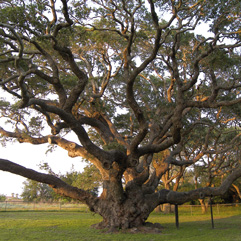 Almost everyone likes trees. They provide many benefits, from the aesthetic to biodiversity and from cleaning the atmosphere to providing timber. However, they can become problematic when things go wrong.
Almost everyone likes trees. They provide many benefits, from the aesthetic to biodiversity and from cleaning the atmosphere to providing timber. However, they can become problematic when things go wrong.
Although relatively rare, trees can cause personal injury and death when they fail and this often results in legal proceedings. As recently as 17 June three young boys aged 9 were crushed when a tree fell on them at Wandsworth Cricket Club. There have been a number of key legal cases involving tree related injuries in recent times including Poll v Bartholomew (2006) EWHC (QB) Bristol which was the case that prompted the establishment of the National Tree Safety Group (NTSG) to develop a common sense approach to tree risk management and balance the risks posed by trees against the environmental benefits they provide.
The issue of tree risk management is live and the subject of much debate. It is certain that cases of this nature will occur in the future and these require specialist arboricultural advice such as that provided by Liverpool based Dealga’s Tree Consultancy.
Trees also cause subsidence damage to low rise buildings. This can result in insurance companies taking action against tree owners or those who have effective control over the trees such as local authorities that have protected the trees with tree preservation orders (TPOs). The case law in this area is well summarised in:
• Solway v Hampshire County Council (1981) 79 LGR 449
• Patterson v Humberside CC (1996) Const. L.J. 64
• Delaware Mansions v Westminster City Council (2002) 1 AC
• (House of Lords)
• Jones v Portsmouth City Council (2002) EWHC 1568 TCC
• Loftus-Brigham v LB Ealing (2003) EWCA Civ. 1490
Nevertheless, tree related subsidence is a major problem for landowners, insurers and councils alike and requires very specialised advice.
Likewise in the area of planning and development trees are often constraints to proposed developments. Specialist arboricultural consultants such as Dr Dealga O’Callaghan can and do advise developers. They assist them to obtain planning permission, undertake tree constraints plans and, if the system fails, act as expert witnesses at appeals and public inquiries. Dr O’Callaghan has acted in many large appeals and inquiries including the 2nd runway at Manchester Airport and Beconsfield Services on the M40. He has acted for both developers and local planning authorities.
Trees are also major causes of unplanned interruptions to the supply of electricity. Network operators have statutory obligations to minimise tree related outages and to ensure, in so far as is reasonably practicable, that their overhead networks are secure from tree damage in times of abnormal weather such as major storm events. To achieve this, the network operators sometimes have to exercise their powers under Schedule 4, Paragraph 9 of the 1989 Electricity Act. This often involves them in hearings before inspectors from the Department of Energy & Climate Change (DECC). This is a very specialised area of work that requires both arboricultural knowledge and experience in utility arboriculture.
Occasionally people undertake work to trees that are protected by TPOs without first obtaining consent from the local planning authority (LPA). This is a criminal offence under Section 210 of the 1990 Town & Country Planning Act and LPAs do initiate prosecutions. The area of TPO law is complex and specialised and typically outside the experience of most solicitors unless they specialise in planning. Only experienced specialist arboricultural consultants should be engaged as experts in cases of this sort.
Competent, qualified and experienced arboricultural consultants are not all that common but those who are, like Dr O’Callaghan, are registered with Your Expert Witness and in the Institute of Chartered Foresters’ Register of Consultants, www.charteredforesters.org.
Visit Dealga’s Tree Consultancy’s website at www.dealgas-treeconsultancy.co.uk.